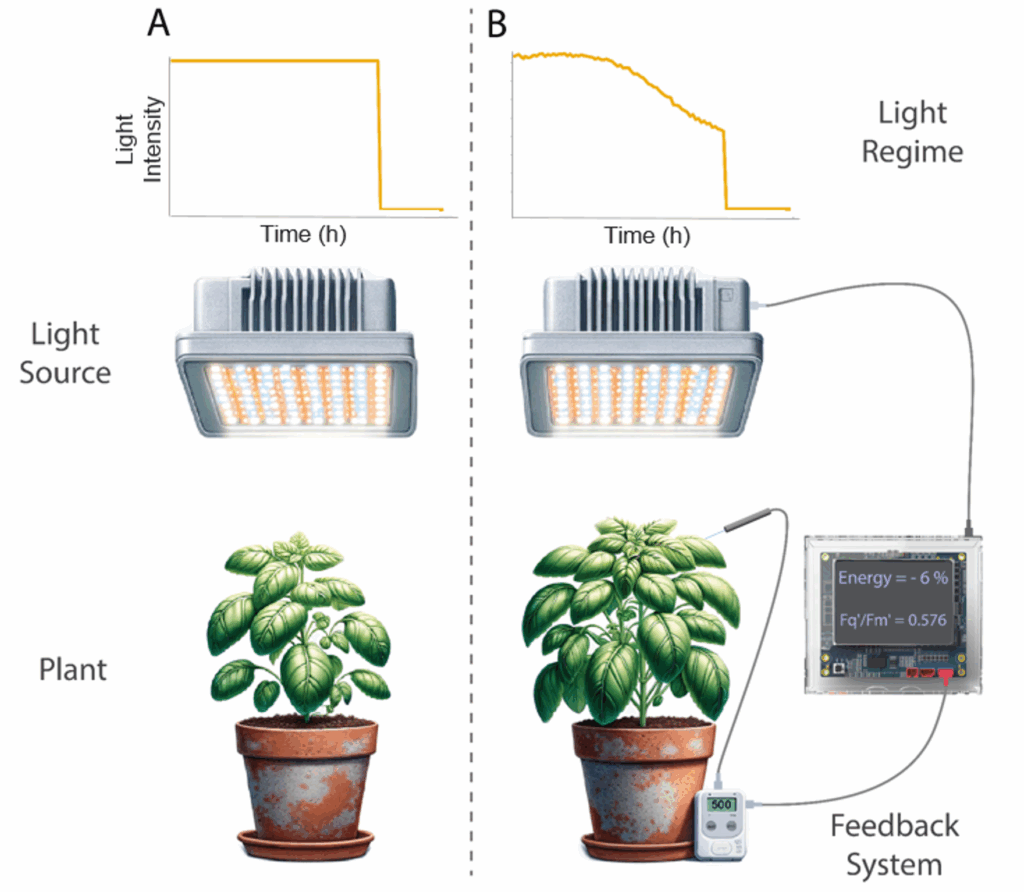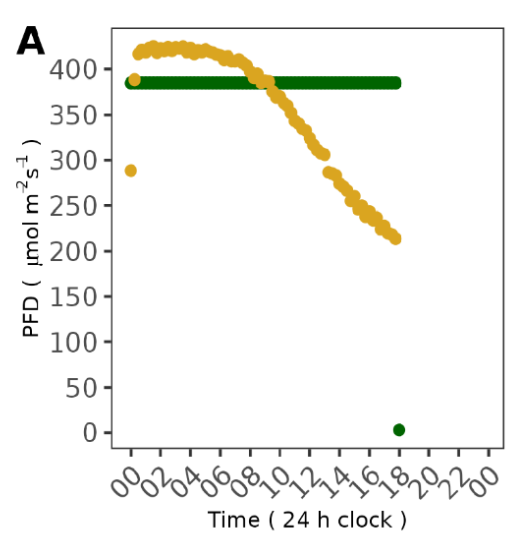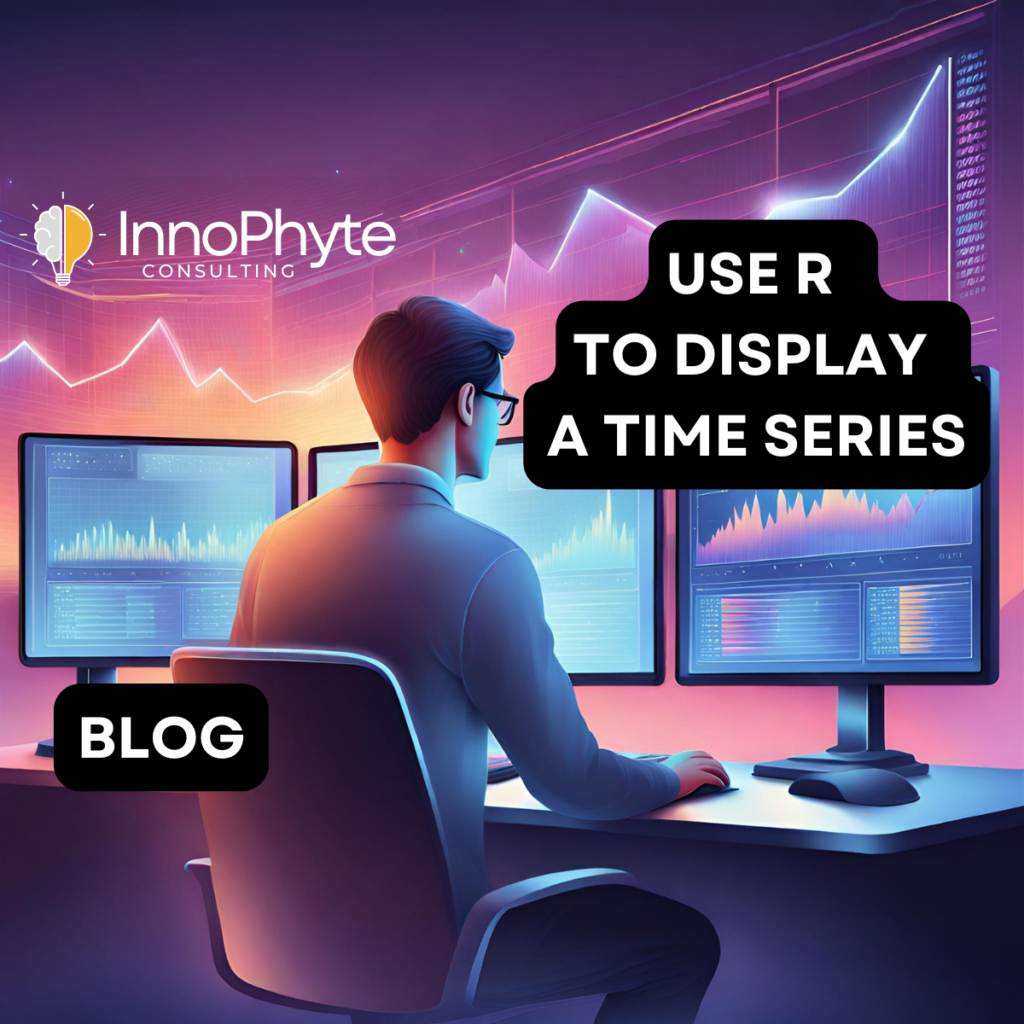At InnoPhyte Consulting, we operate at the forefront of horticultural technology. Our latest work, published in Smart Agricultural Technology, introduces a novel feedback control strategy for optimising plant growth environments.
Read on as we share the key concepts, system design, and results, whilst explaining how these findings translate into practical benefits for growers.
Significance of ‘Green Instructions’ for CEA
The best current versions of Farm Management Systems (FMS) work to maintain fixed targets: a set light level, a set temperature, a set humidity, with measurements taken near to, but not from the crop. Yet plants are constantly in flux, with their physiological needs changing throughout the day. And any change in one FMS variable affects all the others because of these plant responses.
Modern controlled-environment agriculture (CEA) systems therefore demand not just static settings, but dynamic, responsive FMS. So we’ve gone one stage further: rather than simply managing the environment around some desired setpoint, we ‘asked’ the plants what they actually wanted.

In our article, we present how we designed and implemented a feedback system that monitors crop stress and adjusts light intensity accordingly. This implementation has the ability to move CEA away from static, energy-hungry control and toward intelligent, adaptive FMS. This is just the sort of work we love at InnoPhyte: working at the cutting edge of applied science to bring new techniques to market.
The system architecture
Sensors (Fig. 1) detect plant stress (here using chlorophyll fluorescence, where a pulse of bright blue light causes the plants to fluoresce red; the intensity of the red light emitted is tightly coupled to changes in plant physiology). The data are fed into a control algorithm which compares stress levels against a setpoint and then adjusts light intensity in response. The plants therefore optimised their light regime in real time.
Results speak for themselves

Under feedback control (Fig. 2), light levels were optimised, not simply maximised, and plant stress metrics showed a clear reduction compared to a constant lighting regime. This underscores the value of a responsive approach: you reduce waste light while improving overall performance. Note crops in the feedback condition demanded higher light for the first ~9 hours of the day, then rapidly and continuously reduced demand for the remaining 9 hours.

Figure 3 gives the critical result for growers – we used 6% less energy to get 13% more fresh weight in our feedback system.
What this means for your project (and ours)
For clients of InnoPhyte, our research is more than theory: we offer a blueprint for adaptive environmental control in operational settings. Whether you’re managing vertical farms, growth chambers or smart greenhouses, the key takeaway is this: building feedback loops into environmental control systems unlocks both efficiency and productivity.
InnoPhyte’s expertise spans the entire process:
- Systems thinking – modelling, sensors, actuation.
Implementation – retrofits, commissioning, optimisation. - Validation – rigorous data collection in commercial and research settings translated for deployment in your system.
If you’re exploring how to reduce energy costs, improve crop performance or adopt more responsive automation, our strategy offers a clear pathway.
Closing thought
In an era where resource efficiency, sustainability and productivity is shifting from experimental to essential, our feedback‐driven approach will become standard not futuristic. At InnoPhyte Consulting, we are proud to be at the forefront of technological change, helping clients turn research into real-world competitive advantage. If you’d like to discuss how this kind of control strategy could benefit your facility or project, we’d love to connect.

Dr. Jim Stevens
Senior Innovation Consultant
Hello, I am Jim, one of the consultants at InnoPhyte Consulting! My background is spanning from wine trade, finance, and plant science. I can support you with with grant writing, experimental design, data analysis and much more.
If you need to pick my brains, feel free to get in touch at jim@innophyte.co.uk
Science Support
Data Analysis
Data Visualisation
Project Manager
Grant Science


